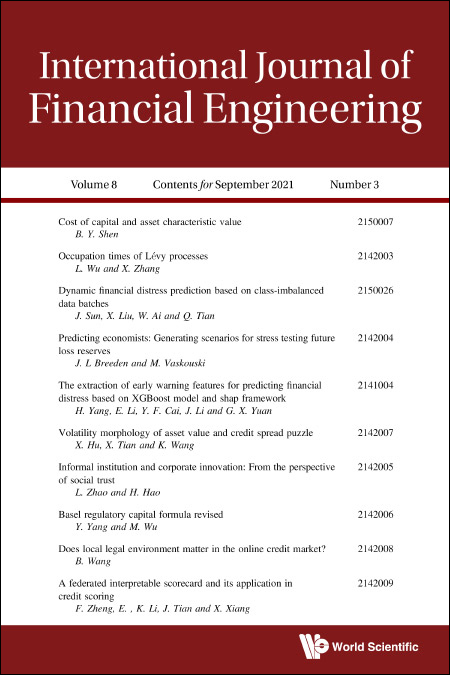A federated interpretable scorecard and its application in credit scoring
Abstract
In this paper, we propose a vertical federated learning (VFL) structure for logistic regression with bounded constraint for the traditional scorecard, namely FL-LRBC. Under the premise of data privacy protection, FL-LRBC enables multiple agencies to jointly obtain an optimized scorecard model in a single training session. It leads to the formation of scorecard model with positive coefficients to guarantee its desirable characteristics (e.g., interpretability and robustness), while the time-consuming parameter-tuning process can be avoided. Moreover, model performance in terms of both AUC and the Kolmogorov–Smirnov (KS) statistics is significantly improved by FL-LRBC, due to the feature enrichment in our algorithm architecture. Currently, FL-LRBC has already been applied to credit business in a China nation-wide financial holdings group.
References
- [2007] The Credit Scoring Toolkit: Theory and Practice for Retail Credit Risk Management and Decision Automation, Oxford University Press, Oxford. Crossref, Google Scholar
- [2016] Scalable and secure logistic regression via homomorphic encryption, in E BertinoR SandhuA Pretschner (eds.), Proceedings of the Sixth ACM Conference on Data and Application Security and Privacy, Association for Computing Machinery, New York, pp. 142–144. Crossref, Google Scholar
- Basel Committee of Banking Supervision, B (2007). Progress on basel ii implementation, new workstreams and outreach. Basel Committee Newsletter, 11, https://www.bis.org/publ/bcbs_nl11.html. Google Scholar
- [1995] A limited memory algorithm for bound constrained optimization. SIAM Journal on Scientific Computing, 16(5), 1190–1208. Crossref, Google Scholar
- Hardy, SJ, W Henecka, H Iveylaw, R Nock, G Patrini, G Smith and B Thorne (2017). Private federated learning on vertically partitioned data via entity resolution and additively homomorphic encryption, https://arxiv.org/abs/1711.10677. Google Scholar
- [2021] Advances and open problems in federated learning, Foundations and Trends in Machine Learning 14(1–2), 1–210. Crossref, Google Scholar
- Liu, Y, Y Kang, X Zhang, L Li, Y Cheng, T Chen, M Hong and Q Yang (2019). A communication efficient vertical federated learning framework, http://arxiv.org/abs/1912.11187. Google Scholar
- Nocedal, J and SJ Wright (2006). Numerical Optimization: Springer Series in Operations Research and Financial Engineering, Springer, New York. Google Scholar
- [1999] Public-key cryptosystems based on composite degree residuosity classes, in J Stern (Ed.), Advances in Cryptology — EUROCRYPT ’99. Springer, Berlin, Heidelberg, pp. 223–238. Crossref, Google Scholar
- [2009] Consumer Credit Models: Pricing, Profit, and Portfolios. Oxford University Press, Oxford. Crossref, Google Scholar
- WeBank (2018). Fate: An industrial grade federated learning framework, https://fate.fedai.org. Google Scholar
- Yang, K, T Fan, T Chen, Y Shi and Q Yang (2019). A quasi-newton method based vertical federated learning framework for logistic regression, https://arxiv.org/abs/1912.00513v2. Google Scholar
- [2019] Federated machine learning: Concept and applications, ACM Transactions on Intelligent Systems and Technology, 10(2), 1–19. Crossref, Google Scholar
| Remember to check out the Most Cited Articles! |
|---|
|
Check out these titles in Financial Engineering |


